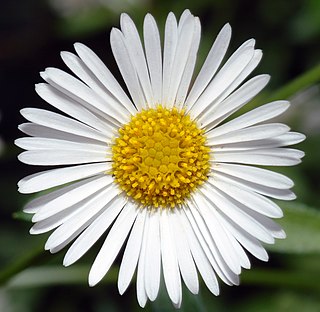
Sonchus is a genus of flowering plants in the tribe Cichorieae within the family Asteraceae and are commonly known as sow thistles. Sowthistles are annual, biennial or perennial herbs, with or without rhizomes and a few are even woody.

Mikania is a genus of about 450 species of plants in the tribe Eupatorieae within the family Asteraceae.

Microseris lanceolata is an Australian alpine herb with yellow flowers and one of three plants known as murnong or yam daisy along with Microseris scapigera and Microseris walteri.
The murnong or yam daisy is any of the plants Microseris walteri, Microseris lanceolata and Microseris scapigera, which are an important food source for many Aboriginal peoples in southern parts of Australia. Murnong is a Woiwurrung word for the plant, used by the Wurundjeri people and possibly other clans of the Kulin nation. They are called by a variety of names in the many different Aboriginal Australian languages, and occur in many oral traditions as part of Dreamtime stories.

Microseris scapigera is a yellow-flowered daisy, a perennial herb, found in New Zealand and Australia. It is the only New Zealand species of Microseris, and one of three Australian species along with Microseris lanceolata and Microseris walteri. It is classified in a group of plants, the tribe Cichorieae, that includes chicory and dandelion.

Acacia penninervis, commonly known as mountain hickory wattle, or blackwood, is a perennial shrub or tree is an Acacia belonging to subgenus Phyllodineae, that is native to eastern Australia.

Olearia axillaris, commonly known as coastal daisy-bush, coast daisy-bush or coastal daisybush is a species of flowering plant in the family Asteraceae and is endemic to coastal areas of Australia. It is an erect, bushy shrub with densely cottony-hairy branchlets, aromatic, linear to narrowly elliptic or narrowly lance-shaped to egg-shaped leaves with the narrower end towards the base and small white and yellow, daisy-like inflorescences.

Erigeron karvinskianus, the Mexican fleabane, is a species of daisy-like flowering plant in the family Asteraceae, native to Mexico and parts of Central America.

Acourtia microcephala is a species of flowering plant in the family Asteraceae known by the common name sacapellote. It is native to southern California and Baja California, where it grows in woodland and chaparral, especially in the coastal mountain ranges.
Calycadenia truncata is a species of flowering plant in the family Asteraceae known by the common name Oregon western rosinweed. It is native to western North America.

Centipeda is a genus of flowering plants in the daisy family, Asteraceae. The genus is primarily native to Australia and New Zealand, with a few species extending the range northward into Asia and across the Pacific to southern South America.

Olearia algida, the alpine daisy-bush is a species of flowering plant in the family Asteraceae and is endemic to south-eastern Australia. It is a shrub with small, crowded, elliptic to narrow egg-shaped leaves with the narrower end towards the base and heads of white and cream-coloured, daisy-like flowers.

Olearia elliptica, commonly known as the sticky daisy bush, is a shrub in the family Asteraceae and is native to New South Wales and Queensland in eastern Australia. It has scattered, sticky leaves and white flowers in summer and autumn.

Amphiachyris dracunculoides, commonly called broomweed, is a North American species of flowering plants in the family Asteraceae. It is native to the United States, primarily the southern Great Plains from Missouri to eastern New Mexico.

Erechtites glomeratus, common name New Zealand fireweed, or cutleaf burnweed, or fireweed or Cluster-headed fireweed, is a species of plant in the sunflower family. It is native to Australia and New Zealand, and also naturalized on the Pacific Coast of the United States.

Olearia decurrens, commonly known as the clammy daisy bush, is a species of flowering plant in the family Asteraceae and is endemic to arid, inland Australia. It is a glabrous, sticky, twiggy shrub with narrow egg-shaped to linear leaves sometimes with toothed edges, and white and yellow, daisy-like inflorescences.

Microseris walteri is an Australian perennial herb with yellow flowers and edible tuberous roots, and one of three plants known as murnong or yam daisy along with Microseris scapigera and Microseris lanceolata.
Olearia hygrophila, commonly known as swamp daisy or water daisy, is a species of flowering plant in the family Asteraceae and is endemic to a restricted part of North Stradbroke Island in south-eastern Queensland. It is a shrub with slender stems, linear leaves and white and yellow, daisy-like inflorescences.
Margaret Beth Gott was an Australian plant physiologist, ethnobotanist and academic who specialised in the use of indigenous plants in south-east Australia.

Taraxacum ceratophorum, also known as the horned dandelion, is a species of flowering plant within the genus Taraxacum and family Asteraceae. This alpine species has a preference for mountainous habitat, where it can be found growing at elevations up to 3000 meters above sea level. It is native to a large portion of the Northern Hemisphere, inhabiting various countries within Asia, Europe and North America.


















